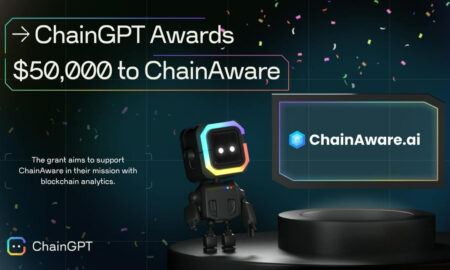Answering this question is perhaps the biggest technical challenge facing cryptocurrencies today, and has inspired a number of competing solutions. Some platforms use a technology called ‘sharding’ (currently employed by Zilliqa and soon Ethereum), while others have opted for increased block size (Bitcoin Cash’s method of choice). However, no solution has received as much attention as the Lightning Network, which is currently being developed for Bitcoin, Litecoin, and several other cryptocurrencies.
First proposed by Joseph Poon and Thaddeus Dryja in 2015, the Lightning Network allows nodes to open up bidirectional payment channels that allow the participating nodes to make secure, instant transactions with one another. In contrast to the above solutions, the Lightning Network is a ‘second-layer’ protocol, meaning it can be built on top of an existing blockchain without making fundamental changes to the blockchain itself.
Ultimately, the Lightning Network has the potential to significantly boost transaction speeds and eliminate network congestion, all while simultaneously reducing fees. If successfully implemented, the Lightning Network could be a powerful tool in preparing cryptocurrencies for mainstream adoption.
How Does the Lightning Network Work?
The first step in a Lightning Network transaction is to form a payment channel between two nodes. This channel will appear on the official blockchain as a multisig (multisignature) address containing a starting balance of cryptocurrencies as well as a distribution of ownership between the two parties involved. For example, a channel could have a balance of 1 Bitcoin, with each node owning 0.5 Bitcoins.
Once a payment channel has been established, the participating nodes will then be able to engage in an unlimited number of “exit transactions” between one another without having to add each transaction to the public blockchain. This is accomplished simply by changing the distribution of ownership within the channel. Each of these transactions will be tracked on a shared balance sheet within the channel itself and will require a signature from both parties stating that the new balance is correct.
This means that there are only two Lightning Network transactions that will be reported on the official blockchain: one showing the channel’s opening balance and one showing its closing balance.
Lightning payments come with several advantages over traditional blockchain transactions. For one, because Lightning transactions don’t have to wait to be added to the blockchain before being confirmed, they can be completed almost instantly. Second, transactions made within a channel will theoretically charge lower fees than those required to make a transaction on the blockchain.
An additional feature of the Lightning Network is that nodes without direct payment channels can still make Lightning transactions with one another as long as there is some combination of channels that connects them.
For example, consider a scenario in which Alex wants to transact with Bill, but the two do not have a direct payment channel between them. If Alex and Bill each has a separate payment channel with some third node, Sarah, then Alex and Bill could transact with each other through Sarah.
This situation is not limited to just one intermediary. As long as two nodes are connected through some combination of payment channels with sufficient balances to facilitate the payment, they will be able to perform Lightning transactions with each other.
Assuming the Lightning Network becomes widely adopted, it is feasible that an entire blockchain could be connected through various payment channels.
Why is Lightning Necessary?
To get a sense of how much faster Lightning is than traditional blockchains, let’s take a closer look at the impact it could have on the Bitcoin network.
The Bitcoin blockchain currently operates at a speed of around 7 transactions per second (tps). This number is dwarfed by the capabilities of traditional payment methods like Visa, which at its peak achieved 47,000/tps.
Bitcoin’s slow speeds are primarily the result of the platform’s 1MB block size. Simply put, Bitcoin is limited in the number of transactions it is able to include in each block, which slows down the speed at which new transactions can be added to the blockchain.
You might be wondering, “If the problem is that Bitcoin’s block size is too small, why not just increase the size?”
The answer is is to do with data size. According to the Lightning Network white paper:
“If we use an average of 300 bytes per bitcoin transaction and assumed unlimited block sizes, an equivalent capacity to peak Visa transaction volume of 47,000/tps would be nearly 8 gigabytes per Bitcoin block, every ten minutes on average. Continuously, that would be over 400 terabytes of data per year.”
This is a huge increase in the amount of data contained in each block and would bring with it a number of negative consequences. Most importantly, a data increase of this magnitude would significantly raise the cost of running a full node, leading to further centralization of Bitcoin mining—which is already dangerously centralized.
For this reason, many cryptocurrency experts—including the creators of the Lightning Network—argue that increasing Bitcoin’s block size is simply not a viable option.
The Lightning Network, by contrast, could theoretically support transaction speeds that are orders of magnitude higher than what is currently available on the Bitcoin network while posing no additional risk in terms of mining centralization.
What’s the Catch?
While many in the cryptocurrency space consider the Lightning Network to be the next evolution in cryptocurrencies, the system does come with some notable downsides.
For one, the fact that exit transactions are not confirmed on the blockchain makes them significantly less secure. It is for this reason that the Lightning Network is only recommended for “micropayments”. Users making larger transactions will likely benefit from the increased protection offered by the blockchain.
Another potential downside of the Lightning Network is the formation of centralized “hubs”. As mentioned above, users will be able to complete Lightning transactions with one another as long as there is some combination of channels connecting them. It is likely that some nodes will attempt to establish themselves as hubs for the Lightning Network—participating in many unique payment channels in order to capitalize on transaction fees. While hubs of this kind would be valuable in facilitating Lightning Network payments, this kind of centralization comes with its own security concerns.
Finally, Lightning Network payments require both parties to be online and available in order to make a transaction. If a channel partner is unresponsive or uncooperative, users will have to find an alternative means of making their transaction.
These and other problems will need to be addressed before the Lightning Network is truly prepared for mainstream use. That being said, the cryptocurrency community may be willing to overlook these shortcomings if the Lightning Network delivers the performance boost necessary for Bitcoin and other cryptocurrencies to become viable on the world stage.
Lightning Network Development Status
The Lightning Network is currently in testing on both the Bitcoin and Litecoin blockchains using software developed by several organizations including Blockstream, ACINQ and Lightning Labs.
Although the software made by each of these developers is still in its early stages, the most recent numbers indicate that there are upwards of 2985 nodes currently running on the Lightning Network’s mainnet.
For the most up to date information regarding the Lightning Network, take a look at the above developers’ public GitHubs.









